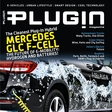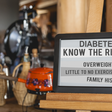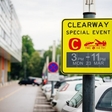
Electronic paper is becoming much bigger than just e-books. Supporting the epaper signage takeover is the reliable track record of first-generation products and the know-how of technology pioneers that make them tick.
This proliferation is made possible by the fact that there is only one display technology that checks all the boxes of versatile indoor and outdoor use, adds Wired. E-paper is rugged, requires very little power and can be used and viewed with ease in absolutely any conditions.
No wonder: the first-generation electronic paper signs have more than proven their worth in the field, operating with a reliable track record and a zero failure rate, saving both time and money for the integrator. These digital displays have led e-paper signage out of its incubation phase and on the path to high-growth adoption, bridging the chasm between early adopters of the technology and the early majority.
First Sydney, then the world
At the forefront of this next phase of electronic ink are groundbreaking projects such as e-paper traffic signs in Sydney, digitalized bus stops in the US and Europe and completely wireless digital door labels to name but a few.
Creating a unique Internet of Things ecosystem of digital displays, the signs have been designed to overcome the usual visibility, powering and connectivity issues that plague both outdoor and indoor installations. Running on Visionect technology, they signal the beginning of electronic paper's transition into the mainstream.
A pioneer of electronic paper industry, Visionect has long been at the forefront of the electronic paper wave. Backed up by 9 years of deploying e-paper signs in the field with a success rate of 100%, Visionect has helped define best industry practices, aware of one simple truth: as the electronic paper technology transitions into mass adoption, nothing beats experience.



